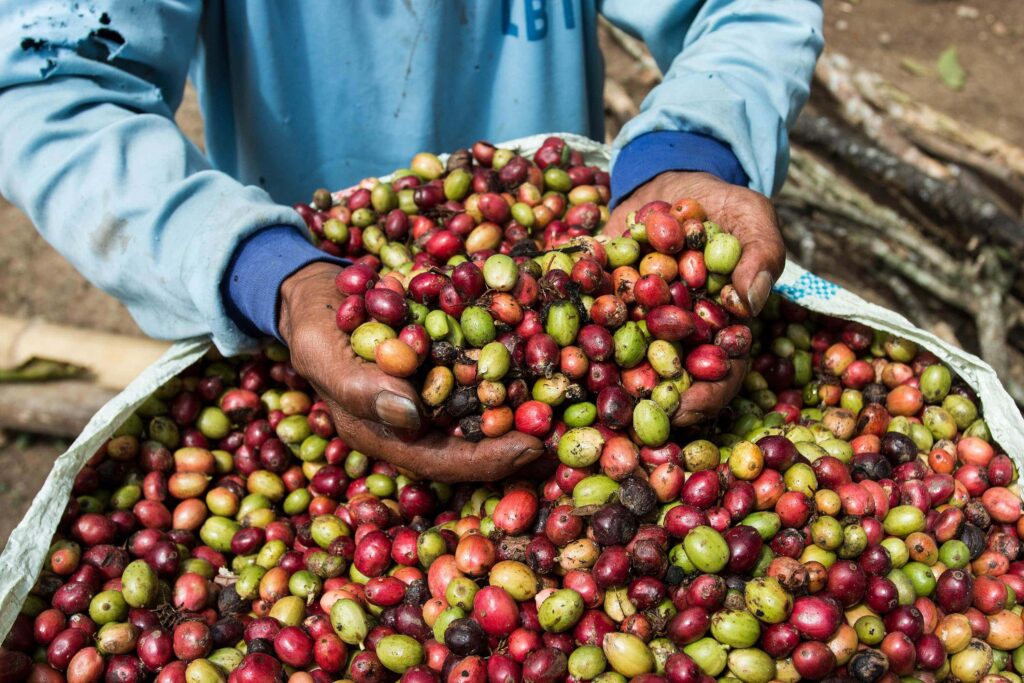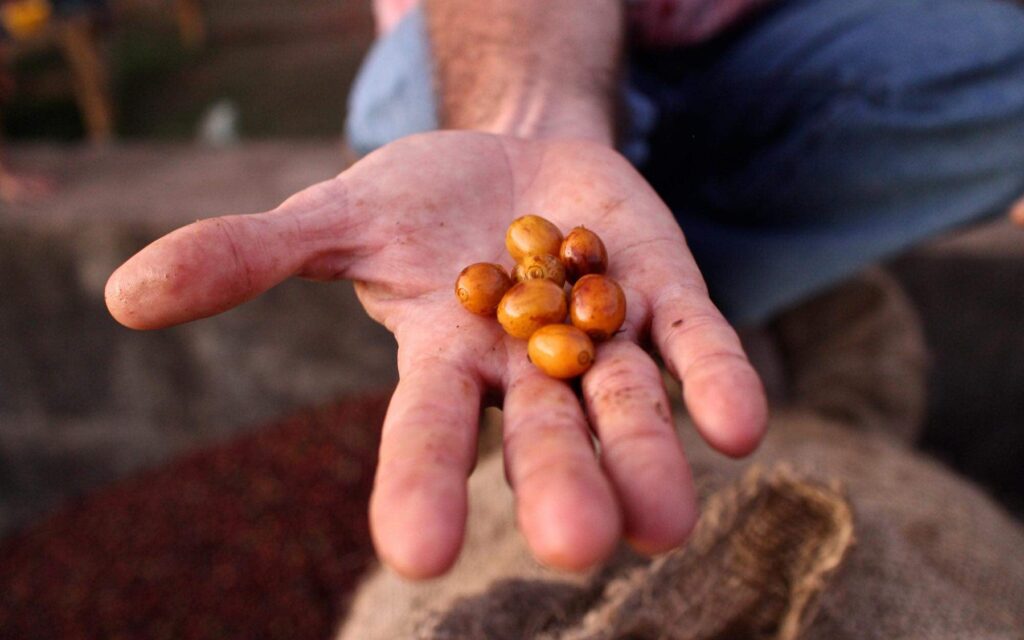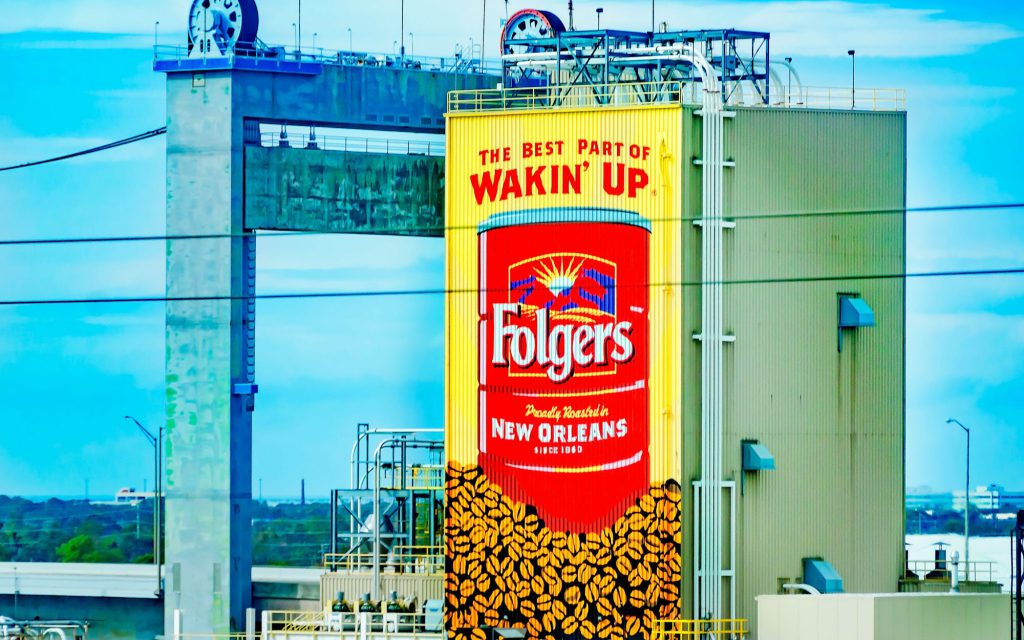WCR is showing more interest in robusta. Does specialty coffee need to do the same?

On 31 May 2023, World Coffee Research (WCR) announced that over the past year, it has been working towards developing a possible robusta breeding programme.
This news follows the launch of WCR’s robusta variety catalogue in early May 2023. The guide is designed to help producers who grow robusta make more informed decisions about different varieties. Ideally, it will also help them implement agricultural best practices as well.
So, with one of the world’s biggest collaborative coffee research organisations looking to invest more in robusta R&D, does specialty coffee need to shift more of its focus towards robusta, too? Read on to find out more.
You may also like our article on how processing can be used to improve the quality of commodity robusta.
New resources for robusta production
On 4 May 2023, WCR published two new resources for producers who grow robusta. These are the Robusta Variety Catalog and Grafting Robusta.
The former is an open-access guide designed to support producers make more informed decisions about growing different varieties of robusta. In turn, WCR hopes the resource can be used to improve both the quality and yields of robusta plants. Theoretically speaking, this could mean that farmers potentially earn more money.
The catalogue is available in English and Spanish, and profiles 47 robusta varieties from a number of producing countries. These include:
Brazil
India
Indonesia
Uganda
Mexico
Vietnam
The guide also outlines more than 20 different variables of the 47 robusta varieties. Some of these include:
Yield potential
Stature
Bean size
Nutrition requirements
Lineage
Susceptibility to pests and diseases
WCR’s robusta catalogue was developed in partnership with several other prominent coffee research institutions. These include the Central Coffee Research Institute (CCRI), the Indonesian Coffee and Cocoa Research Institute (ICCRI), the Brazilian Agricultural Research Corporation (EMBRAPA), and the National Coffee Research Institute of Uganda (NaCORI-Uganda), to name a few.
Given that the genetic diversity of robusta is much larger than arabica, the 47 robusta varieties selected for the catalogue were chosen for their economic, historical, cultural, or genetic importance.
The Grafting Robusta resource, meanwhile, is an English language nursery training and farming best practices guide to support healthy robusta plant growth. The guide includes information on the advantages and risks of grafting, training procedures for farmer workshops, a step-by-step process to use when grafting robusta plants, and best practices for maintaining grafted plants.
Understanding more about robusta
Dr. Tania Humphrey is the R&D Director at World Coffee Research.
“Robusta now [accounts for up to] 40% of global production and its market share is expected to continue growing; it is clearly a part of coffee agriculture that is here to stay,” she says. “Yet we know much less about robusta as a plant than we do about arabica.
“As a scientific organisation, we see that the potential to improve robusta is huge,” she adds. “It has a lot of genetic diversity that has yet to be fully explored by breeders.”
Opportunities for robusta research and development
Following the release of the robusta catalogue and grafting guidelines, WCR recently announced that it “has been deepening its work in robusta, including laying the groundwork for a possible robusta breeding programme”.
Dr. Vern Long is the CEO of World Coffee Research.
“WCR is an industry-driven organisation and our member companies have advocated for us to increase our understanding of the opportunities and challenges to improve robusta production and quality,” she tells me. “Given the growing importance of robusta, and the fact that we have seen robusta shortages over the last few years, this is a natural step for a global collaborative R&D programme like ours to explore.”
In 2022, WCR began working on a study to explore the potential for breeding robusta to support increasing demand. In April 2023, as part of the ongoing study, WCR convened a focus group of robusta buyers. The organisation said this was to better understand their needs and goals when it comes to improving robusta quality.
Collaboration is key
Hosted by WCR member Lavazza at the Lavazza Innovation Centre in Italy, the focus group included robusta buyers from other members. These included Strauss Coffee, Tchibo, Keurig Dr Pepper, Mercon Coffee Group, JDE Peet’s, DR Wakefield, and Coffee Circle. Along with discussing their needs and preferences when buying robusta, participants also talked about the broader challenges and opportunities for robusta production.
Some of the key challenges identified were “supply shortages, farmer attrition, consolidation of origin diversity, consistency of quality, low consumer perception of robusta in some markets, lack of institutional support for improving production or opening new robusta production areas, and regulatory pressure regarding deforestation and chemical inputs”.
At the same time, participants also identified key opportunities for improving robusta production. These include “stronger market differentiation/segmentation (beyond just soluble, blending, or premium segments), improved consistency, new flavour profiles and product innovation, yield improvements, strengthening farmer profitability, and new production systems (agroforestry/shade, regenerative farming approaches, and intercropping)”.
WCR has stated that the potential robusta breeding programme will be a “significant undertaking”, and that the initial stages will begin in 2024. However, in preparation, WCR has partnered with the Centre de Coopération Internationale en Recherche Agronomique pour le Développement (CIRAD) to gain access to a collection of robusta genetic materials.
Why is interest in robusta growing?
Considering that WCR was established in 2012, it was only a matter of time before the research organisation started to invest in robusta R&D.
According to data from the ICO, robusta currently accounts for between 30% and 40% of the global coffee market. Clearly, there is opportunity for its share to grow in the coming years.
Historically, however, between arabica and robusta, the former is often of higher quality and tends to have more desirable characteristics. As a result, specialty coffee has largely favoured arabica over robusta.
But that’s not to say that all robusta can’t be high quality. For example, fine robusta must adhere to a strict number of standards and protocols. These include no primary defects, such as full black or sour coffee beans.
Moreover, when implementing best practices for harvesting and processing, robusta quality can actually improve. Similarly, when roasted and brewed in a way that preserves its acidity and sweetness as much as possible, you can get great results from high-quality robusta.
“You often hear people talk about robusta’s negative reputation, but from what I can see as a breeder, very little has been done to try to improve it,” Tania explains. “If we want to improve robusta, we have to put in the effort to invest in it.
“Just like all coffee [species], robusta R&D is hugely underinvested – that’s something WCR continues to work on addressing globally,” she adds.
The role of climate change
Alongside being more affordable than arabica (although robusta prices are currently at a 15-year high), one of the biggest drivers of growing demand for robusta is climate change.
In 2022, the research paper Expected global suitability of coffee, cashew, and avocado due to climate change estimates that the land used to produce arabica in Brazil, Vietnam, Colombia, and Indonesia will decrease in both size and suitability by 2050. This is largely attributed to the rise in average global temperatures, as arabica is much less climate-resilient than robusta.
However, some experts are claiming that El Niño actually poses a larger risk to robusta than arabica. For context, this is a weather phenomenon which disrupts rainfall and temperature patterns. If this is the case, we could see robusta stockpiles decrease over the next few years, which in turn would increase prices.
So, does specialty coffee need to care more about robusta?
Considering that arabica was placed on the IUCN Red List as an endangered species in 2019, when it comes to securing a sustainable future, there is more pressure than ever for specialty coffee to look for options beyond arabica.
At the same time, however, robusta isn’t the be-all and end-all solution to minimising the impact of climate change on the coffee industry. In fact, research from 2020 found that robusta may not be as climate-resilient as we once thought. Researchers found it has an optimal growing temperature of below 20.5°C (68.9°F) – a difference of 9°C.
In recent years, it’s become evident that specialty coffee is becoming more accepting of robusta. When arabica prices reached a ten-year high in early 2022, a handful of specialty coffee roasters started to add more robusta to blends in a bid to increase profit margins.
Meanwhile, at the 2022 World Barista Championships, Japanese competitor Takayuki Ishitani used a blend of Panama Gesha – one of the most highly-prized arabica varieties in the industry – and natural anaerobic fermented robusta in his routine.
During his performance, Takayuki noted that using robusta in his espresso course allowed him to enhance body and texture – and provided a more well-rounded experience.
Ultimately, only time will tell just how extreme the impact of climate change will be on the global coffee industry – and the role robusta will play in line with this.
However, robusta might not be the silver bullet the coffee industry is expecting where climate change is concerned. Nonetheless, embracing it for other reasons will be important – including to recognise and better support robusta producers.
Enjoyed this? Then read our article exploring robusta’s genetic diversity.
Perfect Daily Grind
Want to read more articles like this? Sign up for our newsletter!
The post WCR is showing more interest in robusta. Does specialty coffee need to do the same? appeared first on Perfect Daily Grind.





Responses